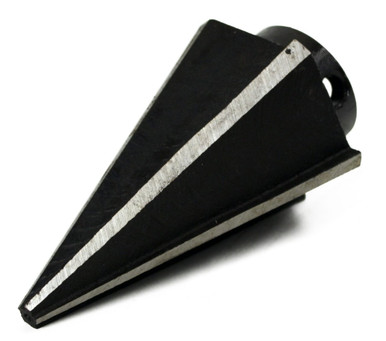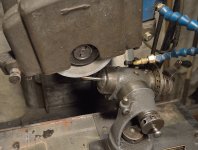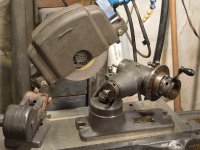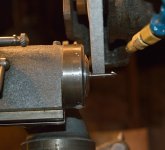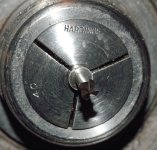If the flutes are straight, you can do it easily for the purposes with a cheap chinese spindex, as others noted so long as you can get away with just topping it. Probably with a cup or dish wheel on the SG. If you have to touch the face of the teeth as well, the difficult part will be holding it out far enough where the grinding wheel won't ram into the spindex as you approach the heel of the tool.*
If the flutes have any curve to them, it will be necessary to find a way to attach a finger to the wheelhead, and let the spindex float (not a hard index, just an axle)
The only real problem with doing some things like that on an SG is that the wheel can't be angled to the travel, so you can't use height to adjust relief. But with a cup wheel, and how the cutter is oriented, it should work just fine for what is really a deburr tool, not a precision reamer to hold a tolerance.
smt
* actually, if the flutes are true radial and you can dress an angle as necessary on your wheel to get in the space, it could be possible to do face of flutes with the bottom of the wheel. The christmas tree shape will take let the wheel clear as it goes by. But it is rare that flutes are true radial, so you would have to tilt the spindex, or do something ingenious like Nmbmxer described.
NMbmxer: Have you watched auctions for an All-tool? They solve a lot of the problems you mention on a surface grinder. In this case i'm making a Christmas tree cutter from a solid round of HSS. It's a wood threading live tool for making cue sticks.
View attachment 372132View attachment 372133View attachment 372134View attachment 372135View attachment 372136


